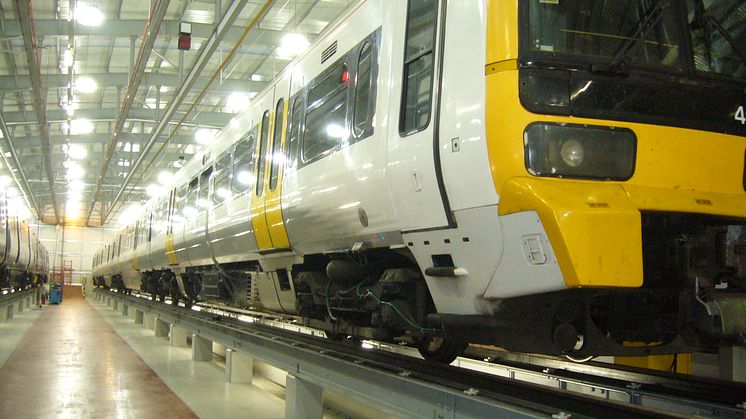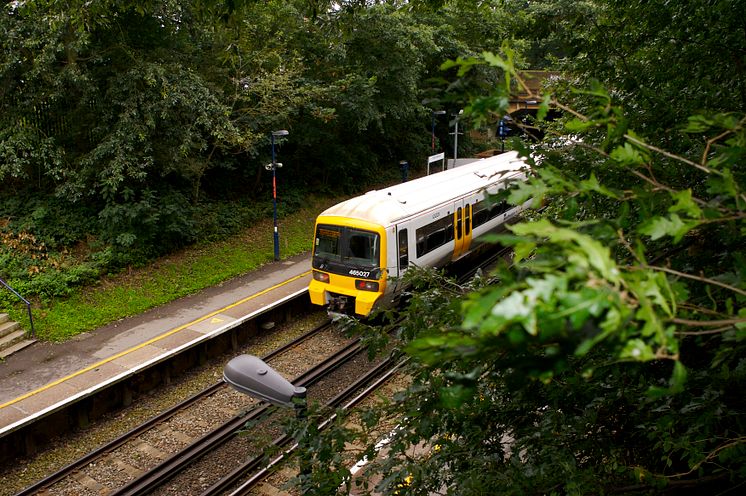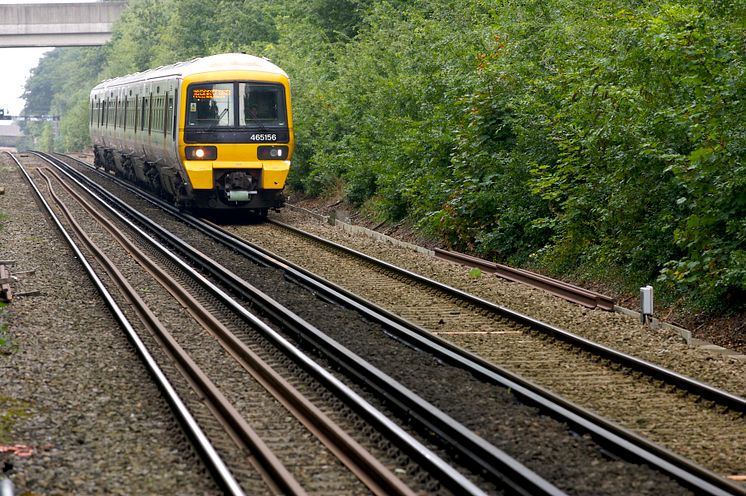
Press release -
Hitachi Traction Packages Fitted to Class 465 Achieve 1 Million Fault-Free Miles in Service
ASHFORD, 9 NOVEMBER 2009 – Hitachi Rail Europe Ltd. today announced that the Hitachi traction technology fitted to Class 465 trains has achieved 1 million fault free miles in service.
The Class 465 Hitachi IGBT based traction equipment, has been developed from technology used on Metro trains in Japan and China and has been designed to mirror the space envelope and weight characteristics of the original, obsolete system. In addition, the regenerative braking capability delivers energy saving of up to a maximum of 25 per cent.
Following successful testing in 2008, the first modified unit was delivered back to Southeastern on schedule on 17th March. To date 54 units out of a total of 97 have been modified at Hitachi’s Ashford facility and the modification of the full fleet is progressing to schedule, with the last train due to be delivered on time in April 2010.
Alistair Dormer, Managing Director at Hitachi Rail Europe Limited, said: “To have reached 1 million miles fault-free is truly a great achievement and testament to Hitachi’s reliable technology and the efficient and high-quality work carried out at Ashford.”
“This project has been a significant systems integration challenge to embed the latest Hitachi technology into the Class 465 architecture. We have met our delivery schedule 100% with the modification and test programme condensed to just two and a half days downtime for each unit. We are extremely proud to have far exceeded our three year reliability target within 6 months and look forward to completing the fleet fitment and providing maintenance for the 465 Traction systems for many years to come.”
Wayne Jenner, Director of Engineering, Southeastern said: “The updated trains have been a part of our improving performance. The original traction equipment’s MPC figure was around 38,000 miles. Since Hitachi handed back the first unit in March, the punctuality and reliability of these trains have met 1 million miles which is extremely good and far better than what we aimed to achieve. The improvement programme has also been delivered on time causing minimal disruption to timetabled services.”
..Ends..


